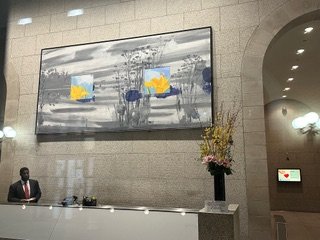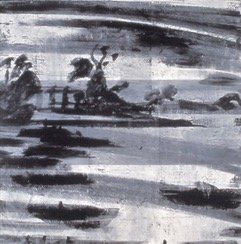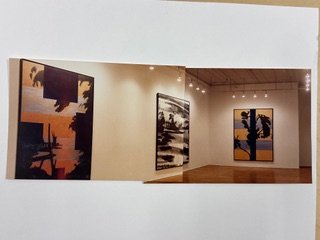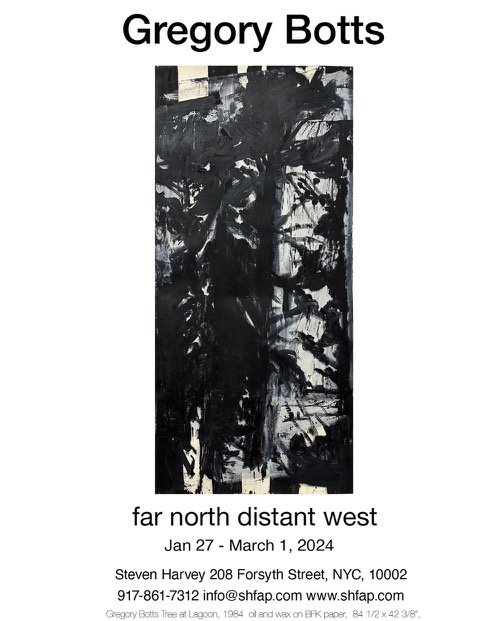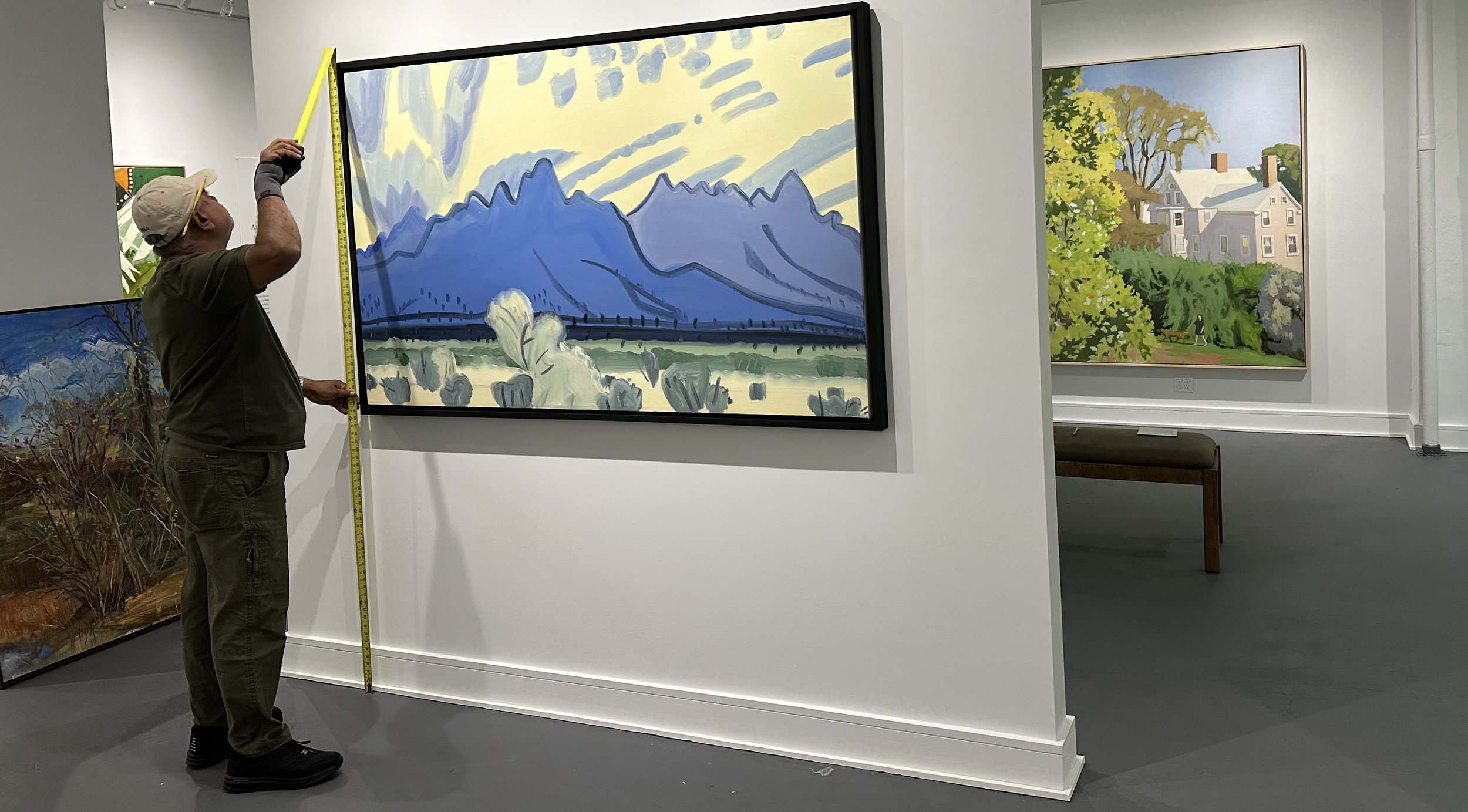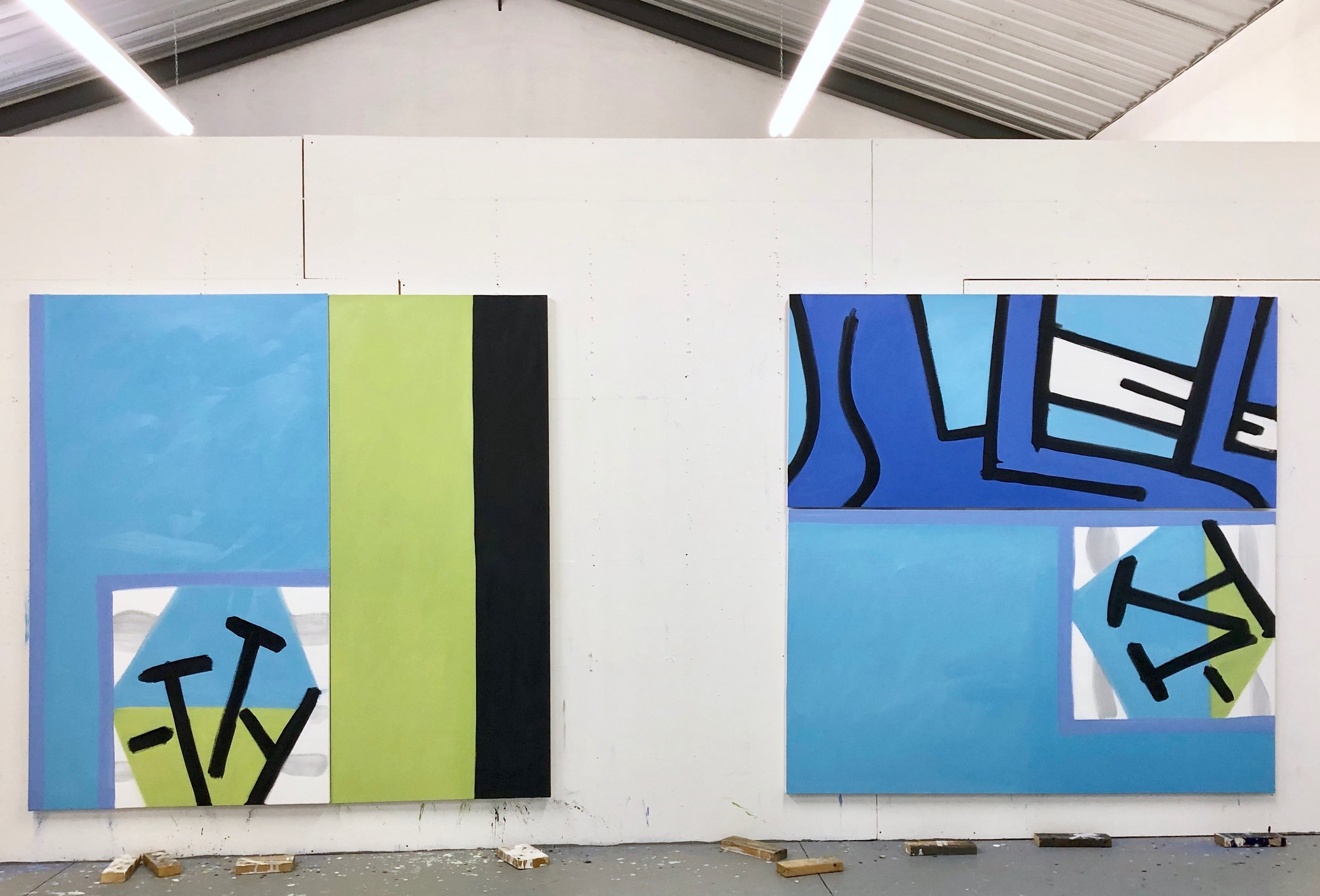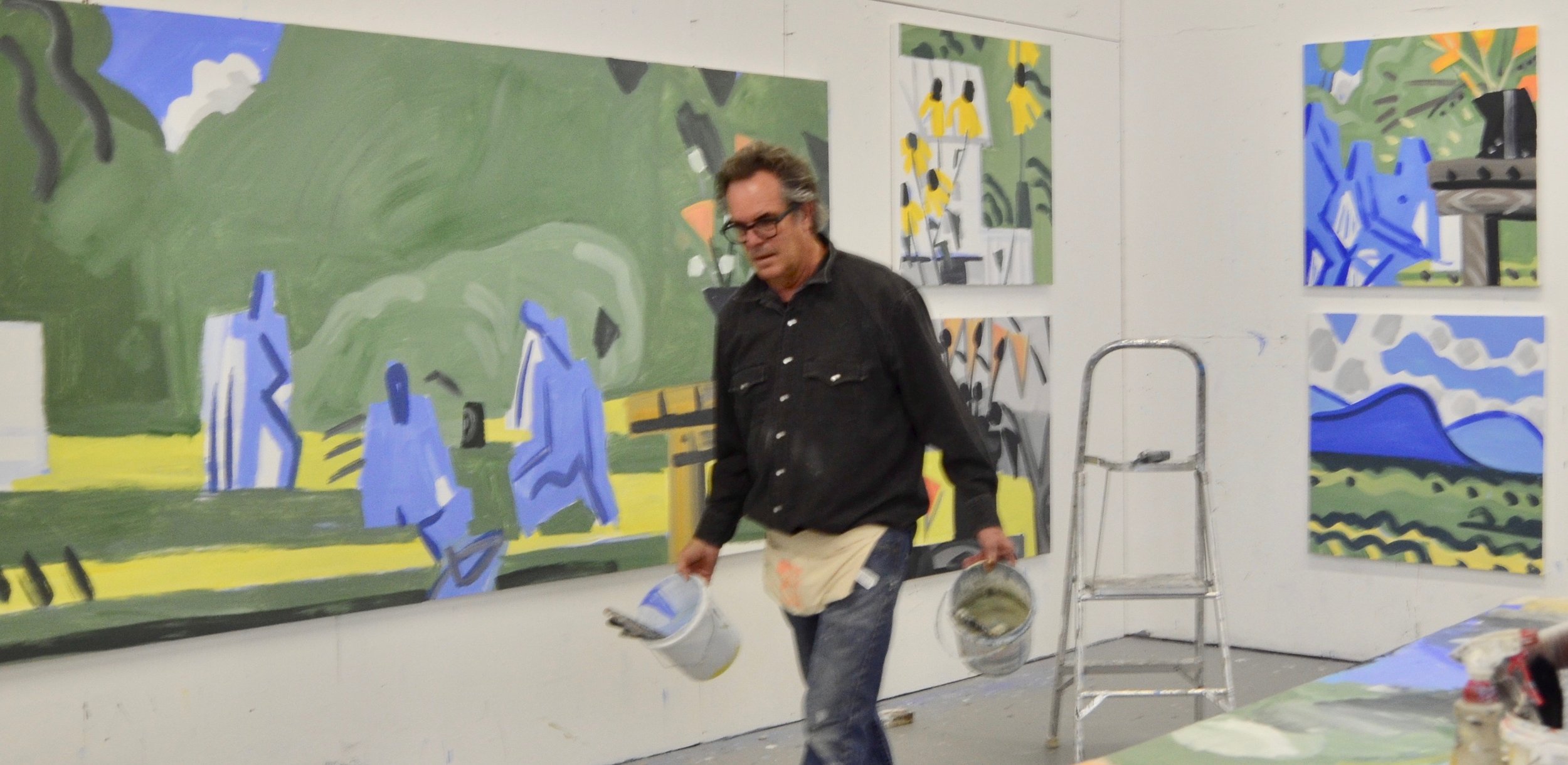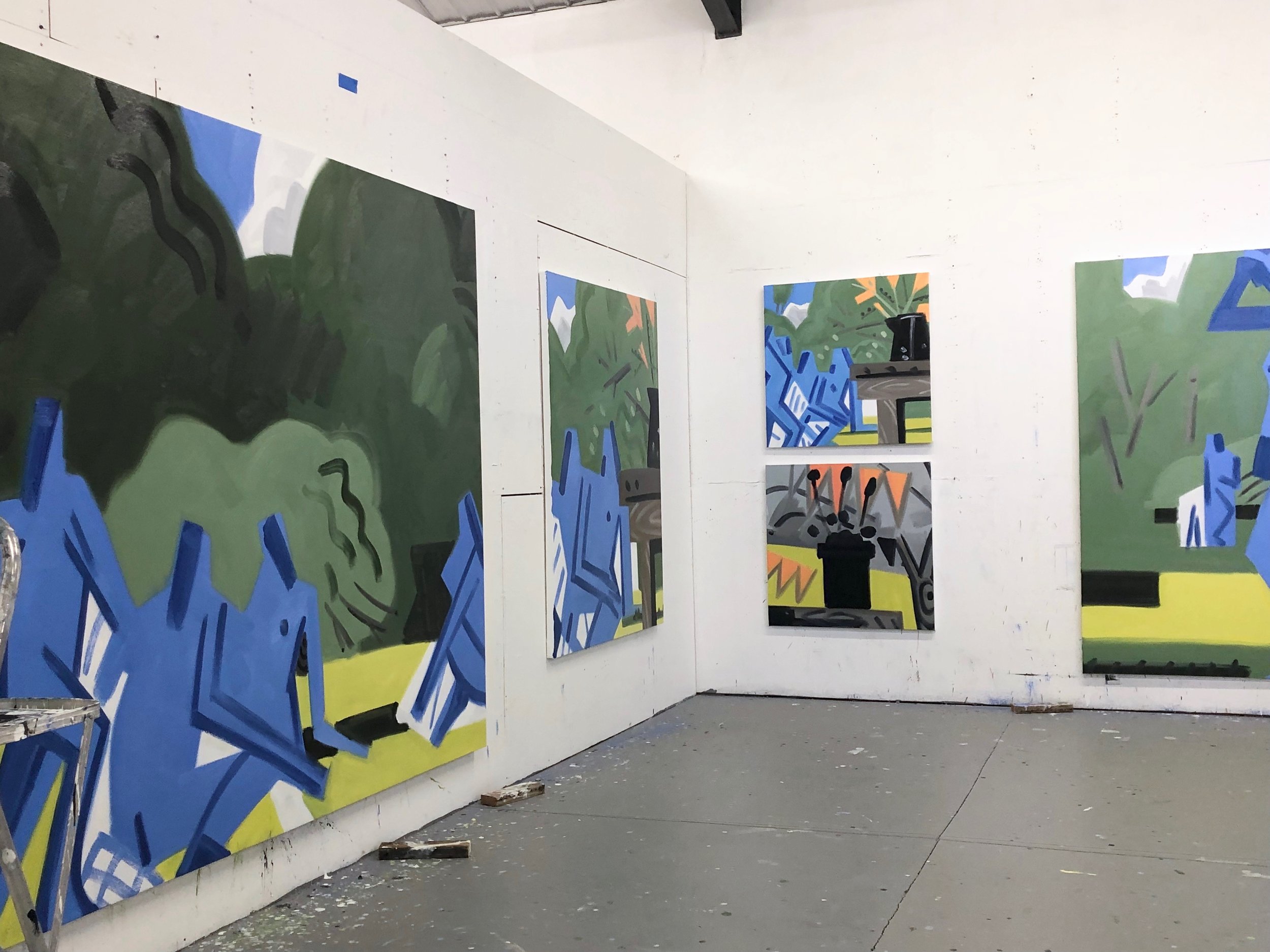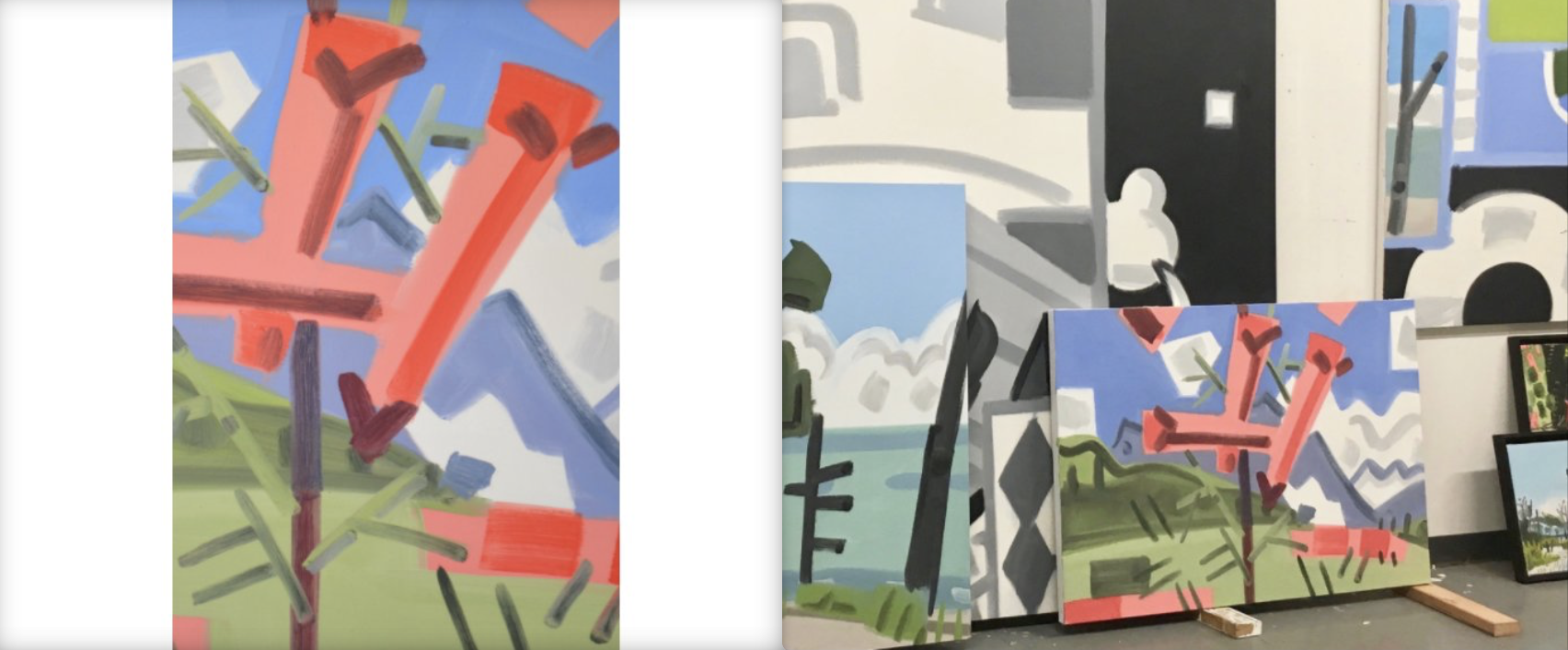There seems to be a renewed interest in the black and white paintings of the 80's. The black and white has been ever present through the years in my Painting. It seems to have “been behind” most of what I do, still to this day. There has been a renewed interest in the 80’s versions I actually painted mostly out of doors. Below is a response to some questions about it.
I came to meet Hank Pitcher in 1972 at in Goleta, CA at UCSB, on the advice of Paul Georges who was one of Fairfield Porter’s best friends at the time in Long Island. Hank later invited Paul Georges, Al Leslie, Jane Freilecher, Charles Garabedian, to the school, as well as myself, a younger representative of an ambitious NY figurative painting.
In 1976 Hank made a 2 person show at the CCS Gallery at UCSB, Sigrid’s abstract and my figurative paintings together, prescient as to what was ahead.
I met Julian Schnabel in 1978, and realized his putting together of the two on a canvas. I set out to explore this direction myself.
I had 10 one person shows in Soho at the Anne Plumb Gallery from 1984 through 1993. These all had aspects of Black and White landscapes I started in Santa Barbara as I taught Spring Quarters through the 1980’s.
One of these paintings from 1989, which now seem a progression— of my thought up to today— hangs in the lobby, at the Federal Reserve Bank in NYC—just now.
In 1994 I opened Tony Shafrazi's new Gallery in Soho. The paintings were of a seeming new western direction, painting at Yosemite and Big Sur. Ro Snell showed a group of these new paintings when she had a gallery in Santa Barbara.
One of these paintings is now in the collection of AD&A, University SB Art Museum.
I
taught with John McCracken at CCS and his wife and mine were best friends. On one of my cross country trips I stopped in New Mexico where he now lived. I ended up living there half the year for the next 25 summers and now consider it my second home. I lived at Richard Tuttles' home and was friends with Susan Rothenberg who I knew from NYC.
In the 2000’s I made large landscapes in color and in B/W and fragmented parts that reflected a cycle I saw in the landscape as I painted out of doors a habit I never gave up. Painting in, plain air, has given to me most of my content outside of that critical theory I am steeped in, in my life in NYC. Obviously this has been a struggle to bring these two into some perspective, but this problem is the reality of my work.
I showed at Gerald Peters in Santa Fe through those years and here in Santa Barbara at Sullivan Goss, in 2008. The relation of landscape to a regionalism— has hampered my success to those that look or know, --no further.
When the pandemic hit I moved to a family house in Upstate New York and am part of a community there as well around Hudson, NY.
In the early days David Shapiro a NY school poet and Harold Bloom wrote extensively on my work. Carter Ratcliff continues to write also.
Last year Steven Harvey who I showed with earlier made a show of Black and White paintings, from 1985.
They were received well and Walter Robinson, who sadly just passed, came to the Gallery to interview me on a Zoom.
Well I guess there is no short way to explain the importance of Santa Barbara to my work.
I had a show at the Contemporary Arts Forum in 1988, here in SB. Robert Orten a collector from Cincinnati and La Jolla purchased 4 large paintings and gave them to Honolulu Academy , where I had a retrospective show, Denver Art Museum, La Jolla Museum, and gave the below painting to the, Santa Barbara Art Museum.
I picture it here.
Ongoing Text #1, "Being a windy night...", the sea, falling soldiers, birds cry out. 1988,
oil and wax on canvas, 117 x 117”
The painting was in a show at Santa Barbara CAF in 1988 or 89. The painting on right was pictured on cover of Arts Magazine with an essay by Harold Bloom, which caused quite a stir. The painting on Left, owned by Denver Museum of Art.
Ongoing Text #2, 'Whirling...resembling the Presences of thought...', Acrylic, oil and wax on canvas, 1988, 117 x 117”
A sister painting in my studio in New Mexico, with a painting from 2024, A Wall in Mexico #3.


